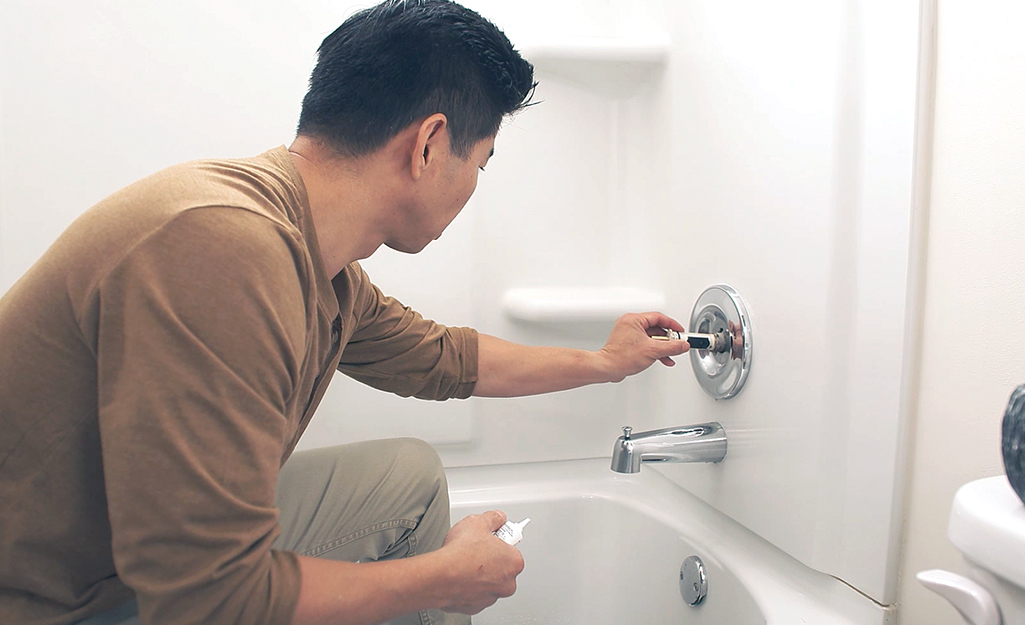Understanding the Significance of Dealing with a Dripping Faucet
Understanding the Significance of Dealing with a Dripping Faucet
Blog Article
On this page on the next paragraphs you can locate a good deal of outstanding answers when it comes to Should I Repair or Replace a Leaky Faucet?.

Leaking faucets may appear like a small aggravation, yet their impact goes beyond just the nuisance of the noise. From drainage to incurring unnecessary monetary costs and health risks, ignoring a dripping tap can bring about numerous repercussions. In this post, we'll explore why it's essential to address this common house problem quickly and efficiently.
Wastefulness of Water
Environmental Influence
Trickling taps add significantly to water wastefulness. According to the Environmental Protection Agency (EPA), a solitary tap dripping at one drip per second can throw away more than 3,000 gallons of water annually. This not only pressures water resources however also affects environments and wildlife depending on them.
Step-by-Step Overview to Dealing With a Dripping Tap
Tools Needed
Before attempting to fix a trickling tap, collect the required tools, including a flexible wrench, screwdrivers, substitute parts (such as washing machines or cartridges), and plumber's tape.
Typical Faucet Issues and Their Solutions
Identify the sort of faucet and the specific concern triggering the drip. Common troubles include damaged washers, rusty valve seats, or faulty O-rings. Describe supplier instructions or on-line tutorials for step-by-step advice on repair work.
Financial Prices
Increased Water Bills
Past the environmental influence, trickling faucets can inflate water costs significantly. The built up wastage over time converts into higher energy expenditures, which might have been avoided with prompt fixings.
Prospective Residential Property Damage
In addition, extended dripping can cause damage to components and surfaces bordering the faucet. Water build-up can cause staining, rust, and also structural concerns if left unattended, leading to additional repair work prices.
Health Worries
Mold And Mildew and Mildew Growth
The consistent visibility of moisture from a leaking faucet creates a suitable setting for mold and mildew growth. These fungi not only jeopardize interior air top quality yet additionally pose health risks, especially for individuals with breathing problems or allergic reactions.
Waterborne Conditions
Stationary water in leaking taps can end up being a breeding place for bacteria and other pathogens, boosting the risk of waterborne illness. Contaminants such as Legionella germs thrive in stagnant water, possibly leading to severe ailments when ingested or inhaled.
DIY vs. Professional Repair work
Benefits and drawbacks of DIY Repair
While some may attempt to fix a leaking faucet themselves, DIY repair services include their very own collection of challenges. Without proper understanding and devices, do it yourself efforts can exacerbate the issue or result in incomplete repairs, extending the problem.
Benefits of Employing an Expert Plumber
Working with an expert plumber makes sure that the underlying reason for the dripping faucet is dealt with efficiently. Plumbers possess the experience and devices to identify and fix tap concerns effectively, conserving time and reducing the threat of further damage.
Environmental Responsibility
Private Contribution to Conservation
Taking responsibility for repairing leaking taps lines up with more comprehensive efforts toward water conservation and ecological sustainability. Every person's activities collectively make a considerable influence on maintaining valuable resources.
Sustainable Living Practices
By prioritizing timely fixings and taking on water-saving behaviors, people add to sustainable living practices that benefit both present and future generations.
Safety nets
Normal Upkeep Tips
To prevent leaking taps, perform routine upkeep such as cleansing aerators, examining for leaks, and replacing worn-out components without delay. Additionally, consider setting up water-saving gadgets or updating to extra reliable components.
Importance of Prompt Repairs
Dealing with leaking taps as quickly as they're observed stops additional water waste and prospective damage, ultimately conserving both water and cash over time.
Effect On Building Worth
Understanding of Well-Maintained Residential Or Commercial Property
Maintaining a residential or commercial property in good condition, including addressing upkeep issues like trickling faucets, boosts its viewed worth and value amongst prospective customers or renters.
Impact on Resale Value
Properties with properly maintained plumbing fixtures, consisting of faucets, command greater resale worths in the real estate market. Attending to dripping faucets can add to a favorable impression during building evaluations and settlements.
Verdict
Addressing a leaking tap surpasses plain convenience; it's an important step toward conserving water, decreasing monetary costs, and protecting health and home. Whether with do it yourself repair services or expert support, taking action to fix trickling faucets is a tiny yet impactful means to advertise liable stewardship of sources and add to a healthier, much more sustainable future.
How to Fix a Leaky Faucet: Step-by-Step Repair Guide
A leaky faucet may seem like a simple annoyance, but if it's not fixed promptly, that leak could cost hundreds to potentially thousands. From water damage to mold, mildew, and high water bills, even a tiny leak can be catastrophic if left unattended. Damage like this can even affect the overall value of your home, so it's important to take the right approach for leaky faucet repair. You may need the help of a plumber in some cases, but we've got a few tips you can try on how to fix a leaky faucet before calling the pros.
Four Faucet Types
When you're learning how to fix a leaky faucet, the first step is knowing what kind of faucet you're working with! There are four common types.
Cartridge Faucets
Cartridge faucets come in one- or two-handled varieties. In one-handled cartridge faucets, hot and cold water combines in a single cartridge. In the two-handled versions, hot and cold water are controlled separately and mixed in the faucet.
Ball Faucets
Ball faucets have a single lever you push up and down to adjust the pressure and rotate to change the temperature. A slotted metal ball controls the amount of water allowed into the spout.
Compression Washer Faucets
They're the oldest type of faucet, but they're still used in many homes — especially older ones. Compression faucets have two separate handles that, when turned, raise or lower the washer that seals a water valve. This valve stops water from flowing through the faucet when it is turned off.
Disc Faucets
Disc faucets rarely need to be repaired due to their maintenance-free design. The water flow is controlled by two discs — the upper one raises and lowers against a fixed lower disc, creating a watertight seal. If your disc faucet starts leaking, you may need to replace the seals or clean residue buildup from the inlets.
Fixing a Leaky Faucet
Step 1: Turn Off the Water
Whether you're learning how to fix a leaky bathtub faucet or how to fix a leaky kitchen faucet, always turn off the water supply to your working area when you're fixing a leak. The last thing you want is a flood added to your list of things to fix.
Look for the shutoff valves below your sink or around the tub and turn them clockwise to stop the water flow. If your faucet doesn't have shutoff valves, you may need to turn off the water for the whole house. Check to make sure it's off by turning the faucet on. If nothing comes out, you're ready to start the repair.
Step 2: Take Apart the Faucet
How you disassemble your faucet depends on the type of fixture you have. You can use a flathead screwdriver to remove the caps on top of the handle or handles for cartridge and compression faucets. Inside, you should see handle screws. Unscrew these with a screwdriver to remove the handle.
Disc- and ball-style faucets will typically have an inlet screw near the handle, and removing that will reveal the interior of the faucet.
Detach the Valve Stem
For cartridge- and compression-style faucets, you'll see the inner valve stem or cartridge once you remove the faucet handles. If you have a compression faucet, unscrew the brass valve stem. If you have a cartridge faucet, pull out the cartridge. If your cartridge has been in place for a while, it may require some tools or extra force to remove it due to mineral deposits.
Examine and Replace Parts
Once you've removed the parts, check them out to confirm what needs to be replaced. You may see corroded rubber washers, O-rings, stems, or cartridges. On a ball-style faucet, check the seats and springs for damage.
If you need to repair a leaky disc faucet, check the inlet and seals on the lower disc.
Once you determine what parts must be replaced, visit your local hardware store. Bring the damaged parts with you to ensure you can purchase the correct components to replace them.
Clean Valves and Faucet Cavity
If you've removed a stem or cartridge, you may notice mineral buildup in the faucet's threads. Use white vinegar to clean the valve seat by soaking it for a few minutes, then scrub it away with a soft toothbrush and rinse with warm water. You can also clean the interior of the faucet in the same way.
Reassemble the Faucet
Once your faucet is cleaned and the required parts have been replaced, it's time to reassemble it. Put the pieces back together and slowly turn the water supply back on. Doing this slowly is crucial because too much initial water pressure can damage the new hardware you've just installed.
https://homewarranty.firstam.com/blog/how-to-fix-leaky-faucet

As a passionate person who reads about Why It's Important to Fix Leaky Faucets, I figured sharing that excerpt was mandatory. Those who appreciated our blog post if you please make sure you remember to share it. Thanks a lot for your time spent reading it.
Report this page